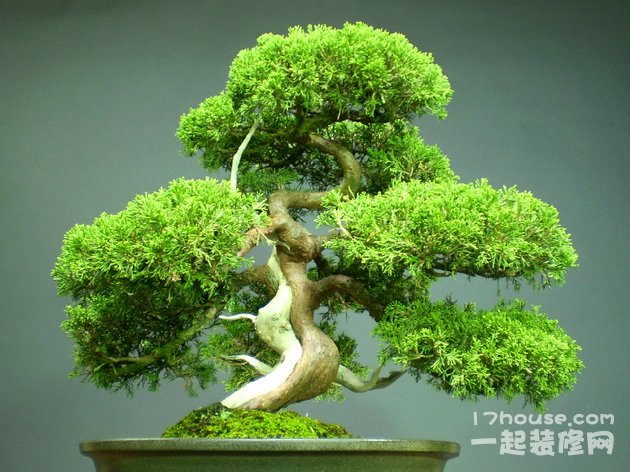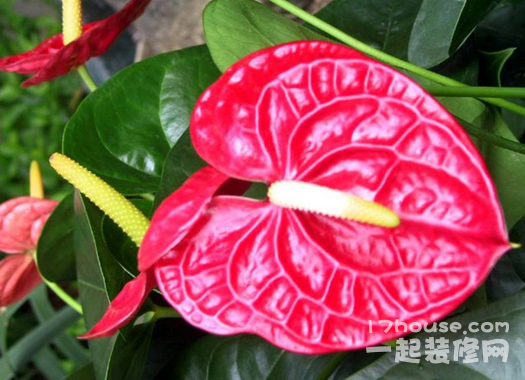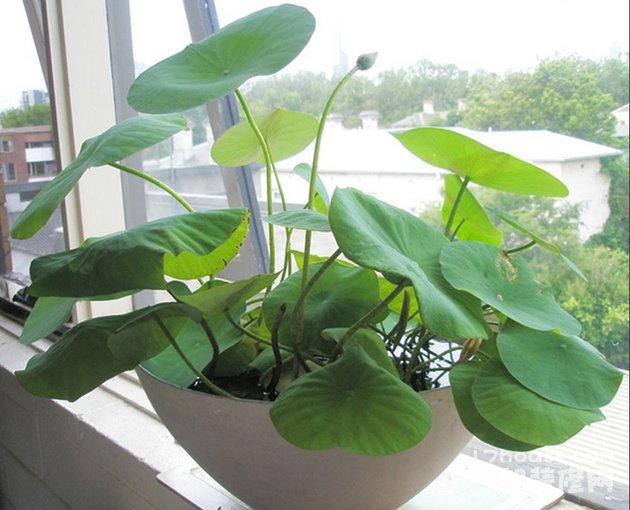Introduction and Conservation of Potted Plants
As we all know, now green plants are becoming more and more popular, and potted plants are quite familiar at home and office. Potted plants give us a narrow personal space to create a natural outdoor scenery. The most important thing is that it can relieve fatigue to our eyes and let us be edified by nature in the tense life and work. Next, let's let the editor of the decoration network introduce the relevant characteristics of potted plants and their maintenance.

Brief introduction of potted plants and their maintenance
There are many different varieties and styles of potted plants. All bonsai consists of three main parts: a trunk, branches and leaves. The difference of the bonsai tree is that the branch is deleted or shaped to achieve the desired form from others. When deciding on bonsai plants for your family or garden, choose a variety that attracts you, suits your style, garden decoration, and generally absorbs harmful gases, purifies the air, and beautifies the environment.
The maintenance of potted plants is not simple, first of all, it is not suitable to water too much: because potted plants are placed indoors in a cool or slightly sunny position, potted plants are watered too much, which will make the potted soil waterlogged and cause the roots of potted plants to suffocate and rot, and the leaves yellow and fall off. Therefore, the watering of indoor potted plants should adhere to the principle of "see dry and wet, water thoroughly", and do not water sporadically or too much. Water the flowers with water from boiled vegetables or from containers that have been washed with fish, which will nourish the plants and help them grow. Secondly, it is not suitable to apply too much or insufficient fertilization: long-term non-fertilization or insufficient fertilization of potted plants will cause the phenomenon of yellow leaves; too much fertilization, potted plants can not absorb the root system burn, can not absorb water will also lead to leaf yellow withering. Usually indoor potted plants choose to apply thin fertilizer at the end of spring and every other week in summer and autumn. If you apply too much fertilizer, you can dilute and wash away some of the fertilizer in the soil through more watering. Lack of fertilizer can lead to pot soil hardening, potted plant leaves yellow, branches slender yellow tender. Fertilization should be applied immediately at this time, and the effect can be achieved within a week. In addition, pot plants should not have too much light or not enough light: depending on the growth characteristics of pot plants, the light should not be too much or not enough. Some potted plants that like sunshine, such as pomegranate, rhododendron and rose, will be placed in places where the light is too weak for a long time, which will cause the plants to weaken gradually, with thin and yellow leaves, no flowering or less flowering. Then there is the prevention and control of diseases and insect pests: the common diseases and insect pests of indoor potted plants are aphids, red spiders and leaf spot caused by viruses such as fungi. Its harmfulness is that it is easy to cause local necrosis or withering of the leaves of potted plants, or even yellowing of the whole plant. Therefore, indoor potted plants only in water, fertilizer conservation, as well as light management to do more articles, to maintain indoor ventilation, timely spray prevention.
Last but not least, talk or sing to plants. Studies have shown that this can help them survive longer, and some plants need to play some specific music. For example, Indian sitar music is the best, followed by classical music. But don't play heavy metal music on any plant.
Brief introduction of potted plants and their maintenance
How to maintain potted plants in autumn? Four main points of Autumn Conservation of potted plants
"there is no place to sleep in autumn, full of Indus in the moonlight" time stroll, walked through Greater Heat, entered the Beginning of Autumn. After a hot summer test, the family's potted plants ushered in a new growth period. However, as autumn is a changeable season, if not maintained properly, it is not easy to survive the hot summer plants, but also inevitably die in autumn. So, how should potted plants be preserved in autumn? Let's take a look.
Picture: potted plants
I. temperature
After Cold Dew in autumn, the weather turns cool, many like warm flowers, can not stand the stimulation of low temperature, at this time should timely move the potted plants to a warm indoor location for maintenance. However, do not enter the house completely, you should do a good job of entering the house selectively according to the habits of flowers. Some flowers enter the house too early, which may adversely affect the next development of plants.
Picture: potted plants
Second, watering
Different habits of flowers, watering methods are not the same. For flowers that like to be moist, it is still necessary to do a good job of moisturizing potted soil in autumn. in addition, for some foliage plants that like wetting, they can spray and wipe their leaves appropriately; for flowers suitable for planting in autumn, ensuring normal watering is an important guarantee for their healthy growth. Most of other flowers need to be watered according to the degree of dryness and wetness of the soil, and gradually reduce the amount of watering, so as to prevent the excessive growth of plants and affect the transformation of flower buds. At the same time, reducing the amount of water will help to lay a good foundation for the safe wintering of plants in the next stage.
Picture: potted plants
III. Fertilization
In autumn, many potted plants will enter a new round of vigorous growth period, at this time, in order to ensure the better growth of flowers, fertilization is very important. There are different ways of fertilization for flowers with different flowering stages. First of all, for potted plants with one flower a year, such as rhododendron and camellia, fertilization should be based on liquid fertilizer, mainly topdressing phosphate fertilizer, probably adding 2-3 times as the best; when potted plants such as rose and jasmine bloom for more than a year, there are higher requirements for fertilizers. Under the condition of ensuring normal fertilization of nitrogen fertilizer, phosphorus and potassium fertilizer can be added appropriately to ensure the growth of plants. In addition, some green foliage plants raised by families can add a small amount of nitrogen fertilizer in autumn, which can make the leaves greener and make the plants more ornamental. When the temperature decreases gradually in autumn in the northern region, fertilization should be stopped immediately to help plants survive the winter safely.
Picture: potted plants
IV. Shaping and pruning
Autumn is a suitable period for pruning branches and leaves. In order to reduce the excessive consumption of nutrients, appropriate pruning is more conducive to the growth of potted plants and effectively prevent the phenomenon of overgrowth. For some common autumn flowers with long buds, the removal of excess buds is more conducive to the flowering quality of flowers; flowering period has passed, or the flowering period is longer, the fallen flowers should be removed in time to promote them to grow new buds and continue to blossom; in addition, the sprouts can be pruned properly, and after pruning, they can be pruned to prevent overgrowth.
[conclusion] Autumn, as the connecting season of summer and winter, the maintenance of potted plants in autumn is directly related to the overwintering of plants. Above for you to introduce the four main points of autumn conservation of potted plants, I hope to be able to help you!
The benefits of hydroponic plants are easier to maintain than potted plants.
Modern society is an era of paying attention to efficiency, and everything is required to be fast, so more and more people like to cultivate hydroponic plants at home. The survival rate of hydroponic plants is high, and at the same time, many troubles caused by potted plants are solved. So what are the benefits of hydroponic plants? let's take a look.
1. Purify the air and benefit your health
Scientific studies have shown that plants can absorb and attach harmful gases to the leaf surface, especially the root system of hydroponic plants, which has stronger adsorption capacity. They can add harmful gases and dust to their metabolism and detoxify them when the substance changes. Hydroponic plants have a particularly good filtration effect on improving indoor air because of their plant characteristics and their ability to combine with minerals, including:
The main results are as follows: (1) absorbing obvious harmful substances: hydroponic plants absorb harmful substances mainly through their roots. Some plant species can remove up to 90% of formaldehyde, benzene or carbon monoxide from the house.
(2) absorption of nicotine: it is now known which plants can best control which harmful substances. For example, green pineapple can clean the air very well in smoking houses, because its leaves and roots can obviously absorb and fix more nicotine.
(3) absorption of formaldehyde: weeping banyan can also effectively absorb a large number of this toxic gas attached to its leaves, within 1-2 days, it can add 90% of the harmful substances to the metabolic process, resulting in sugar, energy and other clean natural substances.
2. Clean and hygienic, with few diseases and insect pests
Hydroponic plants relieve the trouble of finding soil and management when preparing all kinds of potted soil, and adapt to the characteristics of high efficiency and fast rhythm in modern society.
3. Volatilize moisture and maintain air humidity.
If the office can be greened to a large extent, you will no longer need artificial air conditioning. Large-area hydroponic plants are the most effective air conditioners and are conducive to the formation of ecologically beneficial air purification indoors. Cultivating hydroponic plants in large workspaces can significantly reduce the morbidity of staff. The dry air produced by ordinary air conditioners is harmful to people's respiratory tract, and after the introduction of green plants, the number of people who get sick can be reduced by about 40%.
4. Beautify the environment and enjoy the mood
Hydroponic plants are elegant in style and highly ornamental. Hydroponic flowers can not only watch leaves, stems and flowers, but also appreciate the ever-changing roots, increasing the decoration of flowers. Can make use of flowers with thousands of changes in shape and color, with several kinds of flowers random configuration and layout, so as to achieve similar artistic effect of flower arrangement.
5. Easy maintenance and maintenance
Each plant needs five basic growth factors to grow healthily and luxuriantly. They are: light, air, suitable temperature, water and nutrients. Without any of them, the plant will soon wither and die, and no other ingredient can be remedied. On the other hand, soilless cultivation plants already have three factors:
(1) Air: laying small granular ceramsite with good permeability on the plant root can ensure the balanced air permeability of the plant root.
(2) moisture: the water demand of plants is set at the water level hole, and the container can maintain a certain amount of water reserve, so as to save the trouble of continuous watering.
(3) nutrients: hydroponic plants are purchased with enough fertilizer to maintain plant growth, so they can live on their own for up to three months.
(4) Light and appropriate temperature: only these two factors depend on external conditions.
Therefore, it is not easy to raise hydroponic plants to death. Species of hydroponic plants: green pineapple, taro, tortoise back bamboo, white palm, Anthurium andraeanum, Guangdong evergreen, aloe, rich bamboo, goose palm wood, copper money grass, water bamboo and so on.
- Prev

How to cultivate Anthurium andraeanum in hydroponics to make your indoor potted plants more beautiful
Anthurium andraeanum is not only a plant of Araceae, but also a kind of hydrophilic plant. But hydroponics is a little more difficult. So how to grow Anthurium andraeanum in hydroponic culture? How much do you know? Next, let me give you a detailed introduction to how to grow Anthurium andraeanum in water culture. How to cultivate Anthurium andraeanum by hydroponic Culture
- Next

Potted flower planting skills potted flower price
Family planting and cultivation of flowers, generally with potted flowers. Due to the limitations of the conditions, do not plant too much, 10-15 pots is suitable. The selected flowers had better be foliage flowers, flowering flowers, fruit flowers, fragrant flowers, ornamental flowers and so on, so that the varieties will be rich and diverse.
Related
- Fuxing push coffee new agricultural production and marketing class: lack of small-scale processing plants
- Jujube rice field leisure farm deep ploughing Yilan for five years to create a space for organic food and play
- Nongyu Farm-A trial of organic papaya for brave women with advanced technology
- Four points for attention in the prevention and control of diseases and insect pests of edible fungi
- How to add nutrient solution to Edible Fungi
- Is there any good way to control edible fungus mites?
- Open Inoculation Technology of Edible Fungi
- Is there any clever way to use fertilizer for edible fungus in winter?
- What agents are used to kill the pathogens of edible fungi in the mushroom shed?
- Rapid drying of Edible Fungi

